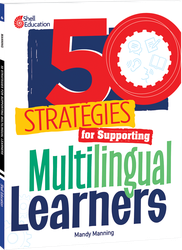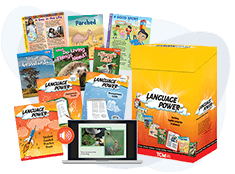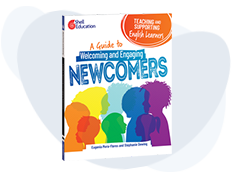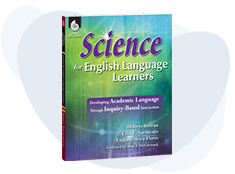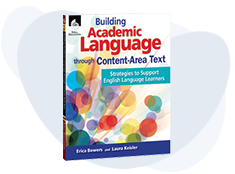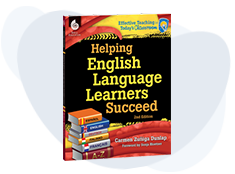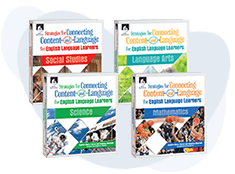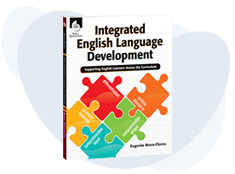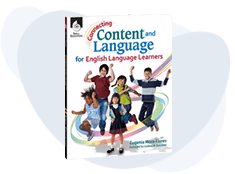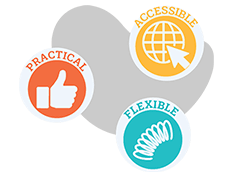The National Education Association: Advocating for and teaching English Language Learners (ELLs)
Since 1966, the National Education Association (NEA) have been stalwart advocates of providing non-native English speakers with the resources they need to succeed in school. The NEA's championing led directly to the 1968 passage of the Bilingual Education Act and, in turn, the Every Student Succeeds Act (ESSA) which focuses on "closing the achievement gap" between English language learners (ELLs) and their native English-speaking peers (National Education Association, NEA.org, ELLs).
ELLs are still severely underserved within the American public school system yet are "the fastest growing group of students in grades K-12" and "comprise more than 10 percent of the total student population" across the U.S. (NEA.org, ELLs). Educators continue to struggle to meet the needs of multilingual learners in their classrooms due to lack of institutional resources (e.g. sufficient funding per child, adequate professional ELL development for educators, strong English language development programs and curricula) provided by individual schools or districtwide.
The Teacher Created Materials / Shell Education professional resources for ELL/ESL teachers above can help make teaching ELLs more accessible, affordable, and are easily applicable to any grade level or subject area.
Discover how you can help advocate and support students as an ELL/ESL teacher by visiting the NEA's English Language Learners page and downloading their PDF advocacy guide All In! How Educators Can Advocate for English Language Learners.
What's the main objective of English Language Learners programs?
Using all 4 language domains, the two main goals of all English Language Learners programs are to:
- promote equity for multilingual learners
- teach language and content together
These programs support English language learners and help students achieve excellence in all academic subjects (not just English language learning or English Language Arts) and engage socially with native English-speakers. When students speak and write English as fluently as their native English-speaking peers, they can excel in higher education and more career possibilities are open to them.
Can native English-speaking peers help ELL students learn English as a second language?
Numerous studies provide compelling evidence of how peer-assisted learning with native English speakers is beneficial to elementary age English learners. In fact, research conducted on peer tutoring for ELL students and native English speakers alike have "consistently supported the positive impact of peer tutoring on student learning outcomes" (Colorín Colorado, Best Practice for ELLs: Peer-Assisted Learning).
What's the difference between English Language Learners programs and Bilingual programs?
The key difference between ELL programs and bilingual programs is that an ELL program is taught solely in English and caters to students of various nationalities and many different languages.
Comparatively, bilingual programs place students in classrooms based on their first language and ELL/ESL teachers must know English and the students' home language. Another popular format is for two teachers (using English and the students' first language) to co-teach a standards-based curriculum.
Regardless of format, bilingual programs are best suited for school districts teaching many students with the same home language. ELL programs are intended for classrooms with students from diverse cultural and native language backgrounds.
Are there English Language Learners standards to ensure ELL students receive equitable instruction?
Yes!
The WIDA English Language Development (ELD) Standards Framework "provides a foundation for [English language learners] curriculum, instruction and assessment for multilingual learners in kindergarten through grade 12" (wida.wisc.edu, ELD Standards Framework).
You can learn more about the WIDA ELD Standards Framework here.
For teachers based in California, the CA State Department of Education's English Language Development Standards can be found here.
What are the 6 levels of English language proficiency?
Per WIDA’s English Language Proficiency Standards, multilingual learners progress through six stages of English proficiency:
- Entering
- Beginning
- Developing
- Expanding
- Bridging
- Reaching
However, learning English as a new language isn't a linear process and depends on multiple factors. These six proficiency levels should not be used as definitive categories for a multilingual learner; rather, variations in proficiency levels lead learners to take different yet equally valid paths to English language development and mastery.
How can educators teach productive language skills to ELL students effectively?
ELL co-teaching experts Drs. Andrea Honigsfeld and Maria Dove advocate for teaching productive language skills to ELL students using the SWIRL strategy (Speak, Write, Interact, Read, Listen) across all subject areas (Collaboration and Coteaching – Strategies for English Learners. Honigsfeld and Dove, 2010).
By placing expressive language skills like speaking and writing first, ELL students receive a more comprehensive understanding of the four domains of English language development (speaking, writing, listening, and reading). While fluency may initially be stronger or weaker in different areas, using multiple modalities to engage with lesson material provides a solid language development foundation for ELL students when learning English as a second language.
A few other suggestions to help ELL students feel more confident speaking English in the classroom are:
- Be culturally responsive and cultivate relationships with students and their families to create a comfortable classroom environment (e.g. start each class with a short 'Check In' asking how students are feeling)
- Offer quality comprehensible input (e.g. 'Show Don't Tell' by using a visual or audio clip to provide vocabulary context)
- Build student interaction into lessons to ensure students share their thinking in English
Whether you're a kindergarten classroom teacher or high school science teacher, TCM's ELL instructional and professional learning resources help support educators teaching ELL students of all ages, in all subjects.
For more tips on how to teach expressive language skills effectively, such as using sentence frames to provide a starting point for ELL students to form their own answers, read our blog Six Effective Speaking Strategies for English Learners in Virtual Instruction or watch our free webinars above.
Does Teacher Created Materials offer ELL instructional and professional learning resources?
Yes!
Please feel free to browse the product boxes above to find professional resources and classroom materials to support ELL student success.



